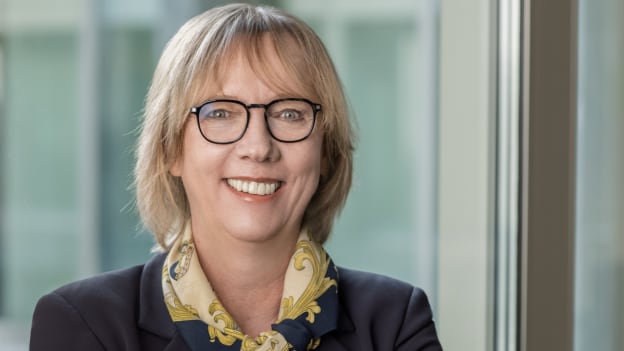Psychological safety is the base for an inclusive future: PMI's Silke Muenster

Earlier this year, Philip Morris International released an Inclusive Future report developed by the International Institute for Management Development, on the methods organisations can use to drive cultural change in support of diversity and inclusion. One major theme emerged throughout the findings: that psychological safety plays a central role in determining just how well an organisation's D&I initiatives can take hold.
People Matters asked Silke Muenster, PMI's Chief Diversity Officer, about the report's findings and how the concept of psychological safety fits into D&I strategies today. Silke has been with PMI for over a decade, and before taking the lead role for diversity, her area of expertise was market research. Coming from that background, she brings a strong focus on measuring outcomes – “What gets measured gets done,” she told us.
Here's her perspective on how to create a long-term strategic approach for D&I.
The IMD report touches on the challenges of measuring D&I by self-reporting. Why do you think self-reporting has been the norm for such a long time?
In deciding an organisation's D&I progress, the feeling of being included or excluded plays an important role, and this feeling can only be measured with self reporting. Of course we know that self reporting has many issues: do people trust that this is anonymous, do they answer these questions, honestly? And if they are feeling a general frustration about the situation this has an impact on all the questions they answer, which could mean that more people tell you that they don't feel included when in fact, they're only frustrated about their their current work or their current circumstances.
The challenge is that so far, nobody has found a different way of measuring this. Now something that we are starting to do more of, in PMI, is to apply technology. We have our own internal communication system, Yammer, which is like social media for company use only, and we can use artificial intelligence to analyse what people are posting. So we hope to get a measurement of what is top of mind for people and what is their current sentiment, without asking them directly.
But it requires very good natural language programming, and then we also have to keep in mind that for many people, in our company, English is not their native language. Some people don't communicate in English at all. So that is a difficulty we face.
On the topic of measurements, what change have you seen in the way people measure D&I progress?
I have had many discussions with colleagues about what we should focus on to really measure progress. It cannot be only measuring female representation because that does not really give a picture of the work you have done. It cannot be measuring inputs either. There was a time when people were spending a lot of money on training, and they were measuring what was done rather than the outcome. And actually, what we have seen is that some of these interventions people have done are not giving the expected outcome. There is literature showing that for example, mandatory trainings with regards to unconscious bias can even have a negative impact depending on your population.
And I think what we really have to measure is, what has changed with regards to our employees?
How have their feelings changed when it comes to inclusion and diversity? How has the representation of underrepresented groups changed?
The IMD report also highlighted psychological safety, which hasn't been a large factor in D&I previously. What are your observations on how psychological safety came to the forefront?
I truly believe that psychological safety is the base for getting to an inclusive future. It is a concept which has existed for a long time, but it's in the last year that I've seen many more people talking about psychological safety. And in the report, psychological safety is clearly defined as the linchpin between the individual elements of inclusion and the organisational elements.
Without psychological safety, you'll never be really able to make progress.
As to why this has come to the forefront, I think it is because we have no global definition of what we mean and what we try to achieve when we talk about being inclusive. Ultimately, you want to achieve belonging. But this report has also made it very clear that you can't focus on belonging alone, because fairness and participation are also very important elements. And these elements do not work unless there is psychological safety as the base, where people feel safe to participate and feel safe to act with fairness or ask for fairness. The connection isn't obvious, but it is there.
Can you share some of your plans to make psychological safety part of your strategy?
We have planned a whole year based on creating psychological safety. Some time back we did an internal study on the health and well-being of employees, and we saw that psychological safety is clearly a base for people's psychological well-being. When they feel they can talk to their supervisors about not feeling well, that makes a huge difference in terms of their well-being.
So we have started measuring, because I'm a big believer that what gets measured gets done. We have consulted with employees, and we have drawn on the work of Amy Edmondson, who is the guru when it comes to psychological safety. She has developed questions for measuring psychological safety and we will include those questions in our next pulse survey, employee survey, which will allow us to also look at psychological safety on a team level and see which teams need intervention. We also plan to gamify some exercises to help teams better understand psychological safety.
And we are currently working with all our leadership teams and managers to familiarise them with what psychological safety means and how can they drive psychological safety. We gave Amy Edmonson's book on psychological safety, 'The Fearless Organization', to all of them as a Christmas gift.
Tell us more about getting leadership buy-in for this change of strategy.
The interesting thing about psychological safety is that it's very easy to get people to buy into it. So every employee understands immediately why psychological safety is important for them, that they can express themselves and talk about their struggles and their fears. Which is a big element of psychological safety, that you're allowed to talk about failures and see them as a way to learn rather than a disaster. And at the same time, it's also easy for our senior managers to understand and buy in, because the role which it plays in driving innovation is so obvious – you have to allow for mistakes and you have to allow for people to try something and then figure out if it doesn't work, and you have to allow for people to come up with ideas which might be only half-baked at the beginning, but which really lead to innovation.
There has been research showing that psychological safety is the top differentiating factor between highly effective teams and less effective teams, and that is a super convincing argument for senior managers:
Psychological safety is not only good for employees, but it's actually good for the business.
So we have arrived at this win-win situation, where we are embedding psychological safety in our strategic goals for the company.
One last question, you've mentioned previously that PMI, over the last one year, was able to dramatically increase the number of women in leadership. Can you tell us a little bit about how to achieve this?
The starting point is to convince leaders to let the hiring process take more time than they would usually want. If you have a candidate list that has little or no women, you need to encourage the leaders to wait for more female candidates to show up. Because in certain areas, especially more technology oriented areas, it's much more difficult to even get female candidates. And if you don't start with a diverse slate of candidates, you'll never be able to hire a woman.
The next thing is to increase the visibility of female talents internally, so that when it comes to promotion and succession for senior roles, those female talents are top of mind. We've launched a female leadership programme and one element is that at the end of the programme, women give a presentation about themselves to an audience which includes senior leaders. That gives them visibility and in this way we have increased sponsorships of senior leaders for for women.














